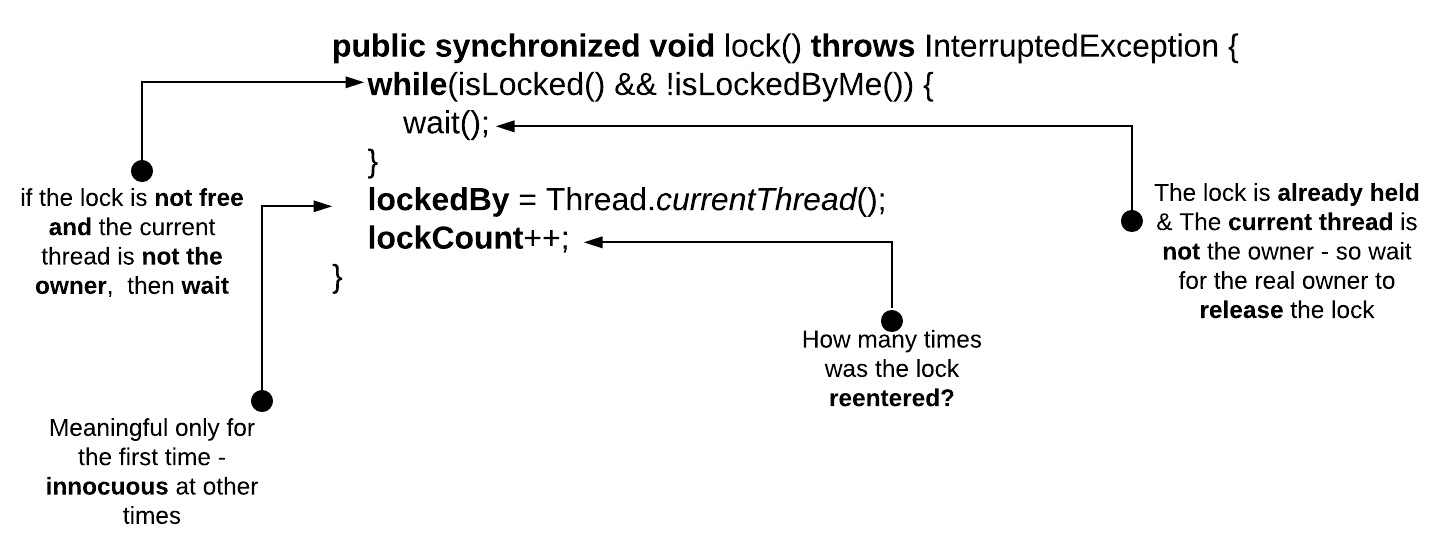The following code shows how we could implement the reentrant lock ourselves. The code shows the reentrancy semantics, too. We just show the lock and unlock method:
public class YetAnotherReentrantLock {
private Thread lockedBy = null;
private int lockCount = 0;The class has two fields—a lockedBy thread reference and a lockcount—which are used to track how many times the thread recursively locked itself:
private boolean isLocked() {
return lockedBy != null;
}
private boolean isLockedByMe() {
return Thread.currentThread() == lockedBy;
}The preceding snippet shows two helper methods. Using such helpers help make the code more readable:
public synchronized void lock() throws InterruptedException {
while (isLocked() && !isLockedByMe()) {
this.wait();
}
lockedBy = Thread.currentThread();
lockCount++;
}Here is a pictorial analysis of the lock() method:

Keep in mind the lock semantics—the lock is granted if and only if it's in a released state! Otherwise, some other...



